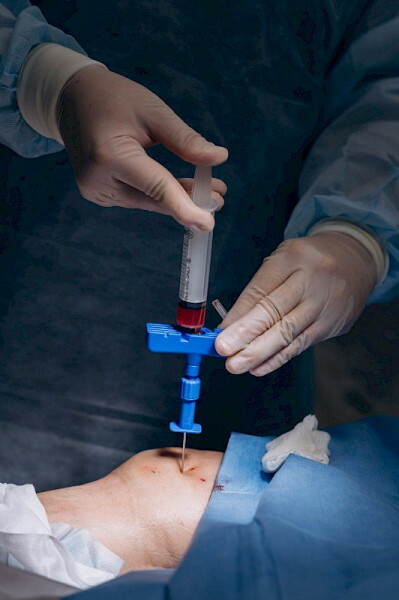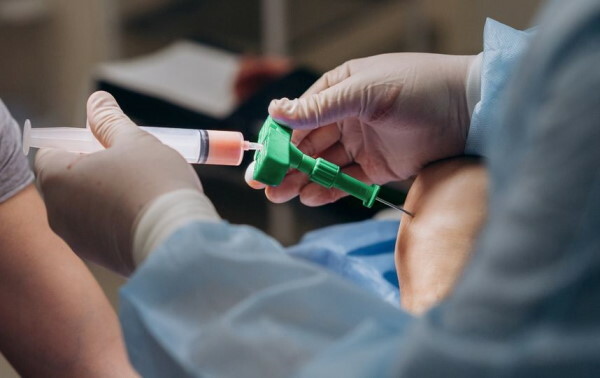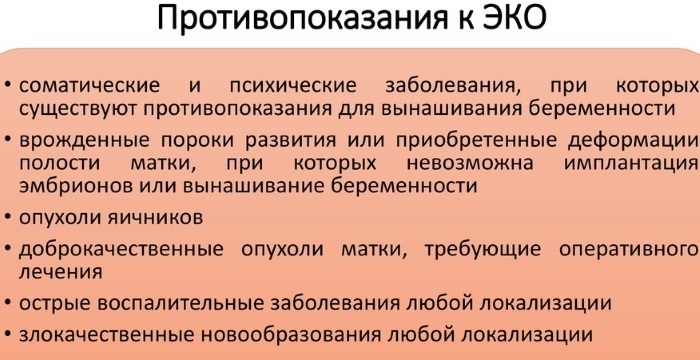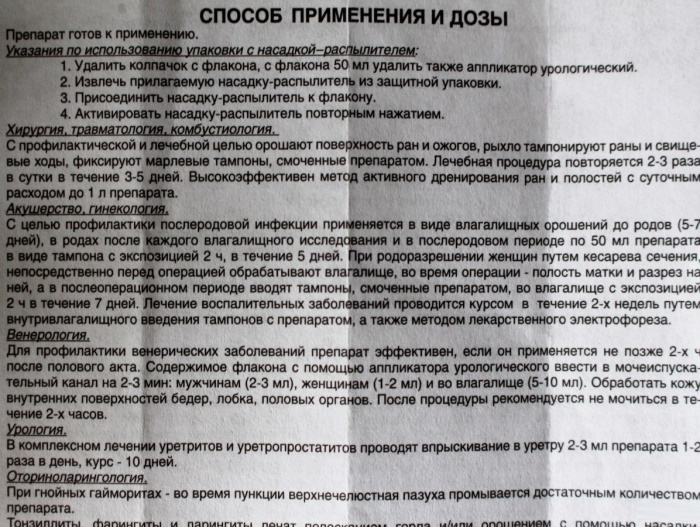Content
- What is it used for
- Views
- Hyaluronic acid injections
- Adipose tissue implant
- Plasmolifting
- SVF therapy
- Mechanism and principles of action
- Installation
- Efficiency
- Contraindications
- Potential harm and side effects
- Advantages and disadvantages
- Knee Bioimplant Video
An innovative method of non-surgical treatment of joints, replacing a complex endoprosthetics procedurei, is of great importance for increasing the duration and quality of human life. Despite the high price of the knee joint bioimplant, it is one of the most successful orthopedic surgeries performed today.
What is it used for
The cartilage tissue that softens the ends of the bones in the joints wears out and breaks down over time or with trauma. This is one of the most common conditions that many people experience.
A knee joint bioimplant (the price depends on the chosen technique) is used to treat arthrosis and is an alternative to endoprosthetics. The technique involves the use of one's own fat cells or bone marrow cells. On their basis, a natural implant is made, which has absolute compatibility with the patient's body.
Most often, adipose tissue cells and separated blood plasma are used. This combination provides the injured area with nutrients and basic building materials.
Unlike other methods of treating knee joints, bioimplantation leads to the restoration of the structure of the articular capsule without the need for additional intervention.
The indications for the installation of a bioimplant are:
- gonarthrosis;
- coxarthrosis;
- deforming arthrosis;
- aseptic necrosis;
- damage to the patellar joint.
Views
Currently, the treatment of joint diseases can be more effective without taking significant doses of pain relievers and anti-inflammatory drugs. For this, in the manufacture of implants, various tissues of the body and preparations similar in action are used.
Hyaluronic acid injections
Hyaluronic acid is similar to a substance found naturally in joints and acts as a lubricant and shock absorber to help the joint work properly. Hyaluronic acid injections are used to relieve pain in people with osteoarthritis of the knee when other treatments have failed.
One of the advantages is that side effects such as swelling and discomfort in the injection site are negligible.
This procedure is suitable for patients who cannot take conventional pain relievers such as Aspirin, Ibuprofen or Naproxen due to the risk of gastrointestinal bleeding. And steroid injections, another common treatment for osteoarthritis, can harm joints if overused.
The use of hyaluronic acid is not recommended as a long-term treatment. Its effectiveness lasts for 6-9 months, after which re-introduction is required. The cost of the drug is 5-10 thousand. rub. excluding the cost of the procedure. The price of the procedure itself is 1-2 thousand. rub.
Adipose tissue implant
The use of a substitute has a similar effect with stem cells. Fat cells are able to transform into cells of bone, muscle or cartilage tissue. In addition, they stimulate greater production of growth factors for better joint recovery. Another advantage is the convenience of tissue selection and their richness in cellular material.
The cost of introducing a bioimplant based on adipose tissue varies from 2 to 8,500 rubles. depending on the clinic and the required amount of material.
Plasmolifting
Knee bioimplant (the price in this case is from 5 to 10 thousand rubles) rubles) in the form of plasma lifting is recommended as an element of complex therapy along with physiotherapy, physiotherapy exercises and a suitable diet.
This method involves the introduction of platelet-rich blood plasma into the articular sac to relieve the inflammatory process, accelerating the restoration of cartilage tissue and reducing the impact on the body of medications, with the help of which inflammation is relieved and pain. The method is used in the treatment of various diseases affecting the joints.
Plasma injected into the articular sac contains biologically active components that accelerate the regeneration of cells destroyed by friction. As a result of the treatment, the surface of the joint becomes even, and the cells of the bone tissue, destroyed by stress, are gradually restored.
Plasmolifting is often prescribed for combination therapy of arthrosis of the knee or hip joint. Plasma treatment is safe for the patient. The procedure is performed on an outpatient basis using diagnostic equipment.
The number of injections required and the duration of treatment are individually determined by the doctor. Depending on the degree of joint damage, 10-50 ml of venous blood is used.
SVF therapy
The autologous stromal vascular fat (SVF) procedure involves obtaining adipose stem cells that used for various autoimmune, urological, neurological, pulmonary, ophthalmic and orthopedic operations. In orthopedics, the stromal vascular fraction from adipose tissue is used in patients with ligament and tendon injuries, chondromalacia, and osteoarthritis.
The stromal vessel fraction is a by-product of the collection of excess adipose tissue and contains a large number of stem cells.
- The procedure takes about 4 hours. The doctor first injects a local anesthetic and then makes a small incision in an area of the body with fatty tissue, such as the buttocks or abdomen. Approximately 60 ml of adipose tissue will be obtained using liposuction.
- Then the stromal vascular fraction and its constituent adult stem cells are separated from fat cells, macrophages and additional tissue components by centrifugation.
- In the next step, stem cells are isolated from SVF using multiple filtration.
- The prepared stem cell solution is injected into the affected area to the patient.

Modern researchers have found that most of the injected SVF fluid is reabsorbed within 2-4 days after injection. However, adipose-derived stem cells attach to the lesion and survive for a long time.
The cost of the procedure is 55-80 thousand. rub.
Mechanism and principles of action
The process consists in the selection of the patient's own cells and the manufacture of an implant based on them. The resulting material is introduced into the periarticular space with a special ultra-thin instrument. This does not require hospitalization and the use of general anesthesia.
The viscous properties of the injected substance are similar to the natural synovial fluid, therefore they protect the parts of the joint from friction well. In addition, the implant normalizes the production of natural fluid, triggering regenerative processes.
After insertion into the knee joint, the bioimplant evenly covers the articular surfaces, lubricates them and forms a protective layer. The inserted cells effectively cushion the joint, reducing mechanical stress. Such a coating ensures the preservation of the integrity of the cartilage tissue, protecting it from further destruction.
The use of a bioimplant ensures the restoration of the lumen of the joint space, which physically isolates the rubbing surfaces. Reducing friction and eliminating persistent irritation leads to elimination of pain.
Unlike injections of blockade or hyaluronic acid, a bioimplant based on adipose tissue repairs the joint, relieving inflammation and pain. The use of adipose tissue is mediated by the rich content of progenitor cells (progenitor cells). In high concentration, the implant contains chondrocytes - the main cells of the cartilage tissue and osteoblasts - young bone cells. Thus, cells adhere to related tissues, providing regeneration at the cellular level.
Bioimplants are successfully inserted into the knee joint for various categories of patients. The price for treatment depends on the chosen method, and there are no restrictions on gender and age.
Installation
The installation of a bioimplant begins with the preparation of biological material. In the doctor's office, the patient's blood is taken for the manufacture of the future injected substance.
With the help of centrifugation, plasma is separated from whole blood:
- The patient is placed on the operating table, after which the antiseptic measures of the operated area are carried out. In standard situations, local anesthesia is used, but according to indications, the patient can be immersed in medication sleep.
- Further, the adipose tissue is taken. Usually lipoaspiration is performed in the abdominal area. But with a pronounced deficiency of adipose tissue, a fence in the thigh area is possible.
- The resulting tissue is separated from fat cells and connective tissue bridges by centrifugation and filtration.
- Using ultra-thin equipment under ultrasound control, the doctor makes several punctures in the articular region. Prepared plasma and fat cells are injected through these punctures.
- At the end of the procedure, a sterile dressing is applied and the patient is allowed to go home.
The whole procedure, together with the collection of biomaterial, is no more than 1 hour.
Efficiency
The effectiveness of treatment consists of several factors:
- one procedure is enough;
- the resulting implant is absolutely compatible with the body;
- lack of a rehabilitation period.
- minimal trauma to the skin keeps the closed joint system sterile;
- the absence of severe damage minimizes the recovery process.
A knee joint bioimplant (the price fluctuates slightly in the regions) reduces the period of limiting the load on the knee, in contrast to the prosthetics method. Instead of 6 months, the restoration of the usual way of life occurs in 2-3 weeks.
The absence of rehabilitation measures and rejection of the injected substance, allergic reactions allows you to get the maximum effect after 2-3 weeks.
Knee pain is minimized 2-3 hours after implant insertion. The range of motion is restored within 3-4 days. A few weeks later, the control X-ray shows the restoration of the natural appearance of the articular region.
Contraindications
A knee joint bioimplant, the price of which is high, but compensated for by its effectiveness, has a small number of contraindications. The application of the method is possible for any age category, regardless of gender. The procedure has no contraindications for pregnant and breastfeeding women.
Among the main contraindications are:
- blood clotting disorders;
- diseases of oncological genesis;
- viral hepatitis;
- primary and secondary immunodeficiency;
- feverish condition;
- diabetes;
- epilepsy;
- taking anticoagulants;
- body temperature above 38 ℃;
- herpes;
- skin infections;
- acute course of infectious diseases;
- the presence of systemic violations;
- polyallergy and allergic reaction to sodium heparin;
- depression and mental illness.
Potential harm and side effects
In rare cases, it is possible to develop an allergic reaction to a drug introduced into the blood plasma to prevent its clotting. In this case, you will need to take antihistamines.
Redness of the injection site, swelling or bruising may develop, but they usually disappear within 2-3 days. The increase in pain is associated with the action of growth factors. In this case, 2 options for dealing with pain are possible. Cryotherapy or ice application and knee immobilization reduce pain. It is unacceptable to use anti-inflammatory drugs. They inactivate growth factors and minimize the effectiveness of the procedure.
The most dangerous possible harm is the infection of the biomaterial during the centrifugation process. The use of such material leads to the development of inflammation and suppuration. If the patient has strong immunity, only hygiene of the damaged area will be required. Otherwise, drug therapy is prescribed.
Advantages and disadvantages
The increasing need to improve the outcome of knee surgery has led to the development of new implants. The methods of making and introducing biological materials successfully compete with the methods of open surgery.
| Advantages | disadvantages |
| The introduction of the drug is carried out without opening the articular bag. | Injections may not have the same effect on all patients. The high cost of the operation. |
| The patient does not require hospitalization and rehabilitation measures. | |
| The procedure is carried out under local anesthesia and is effective after a single injection. | |
| There is no implant rejection, since it is made from the body's own tissues. | |
| A single injection of the biomaterial leads to a significant restoration of the natural structure of the joint. | |
| The effect persists throughout life and does not need to be adjusted, unlike endoprosthetics. |
When comparing the prices of knee arthroplasty and bioimplant installation, in the first case, the price is often much higher.
The use of a bioimplant for the knee joint, despite the high price, is an advanced method of medical care. For treatment, the patient's tissues are used, which leads to absolute survival of the administered substance and the absence of side effects. Unlike conservative methods of knee joint treatment, bioimplantation provides a lifelong positive effect.
Knee Bioimplant Video
Knee Bio-Implant:



